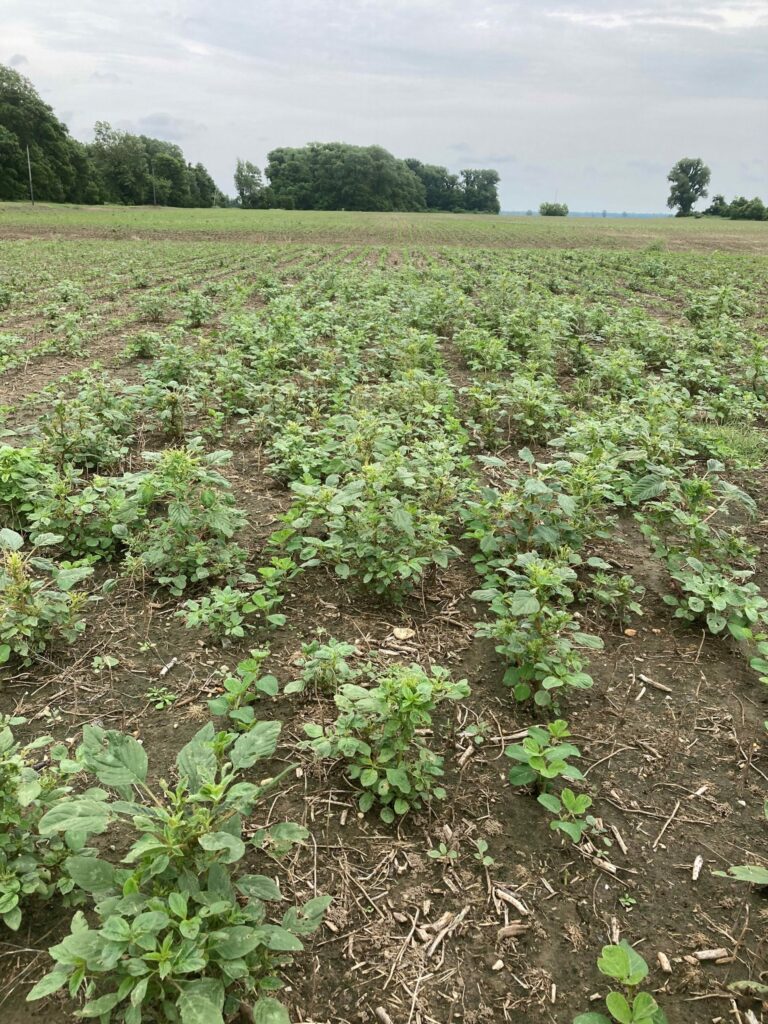
Increase in input costs and lower relative commodity prices compared to last year may tempt some to forgo using a PRE this spring. Since glyphosate and dicamba have actually gone down in price, it may be tempting to try this combination near planting, then hope that dicamba will provide enough residual weed control to hold until those herbicides can be applied again early POST.
I walked some fields where this weed management strategy was employed last spring and it did not go well (Picture 1). I am often asked about how much residual control dicamba will provide. The answer is that it depends. Dicamba is broken down primarily through soil-borne microbes. Under warm and wet soil environments that are more conducive to rapid microbial activity, dicamba will provide only a few days of residual control. During a dry spell, particularly early in the spring when soils are cooler, residual broadleaf control can be expected for a couple weeks. However, if conditions turn warm and wet, then the shelf life for dicamba will be reduced to a matter of days. It is also broken down to a lesser extent by exposure to light. As such, when the calendar turns to June and day length nears its maximum, dicamba will degrade even quicker.
In short, dicamba can provide some residual pigweed control. However, the level of consistency you can expect is very limited compared to the many premixes used today PRE in soybean or even some of the more common herbicides used in cotton PRE. Moreover, dicamba provides no residual grass control. In recent years grass weeds have become much more prevalent in part because some have forgone using a Group 15 herbicide like Dual Magnum, Warrant or Zidua at planting.
It maybe tempting from a price point to forgo a traditional PRE-applied herbicide in soybean or cotton. However, it will often cost more in the end as frequently more POST applications are needed and soybean and cotton yields suffer.

